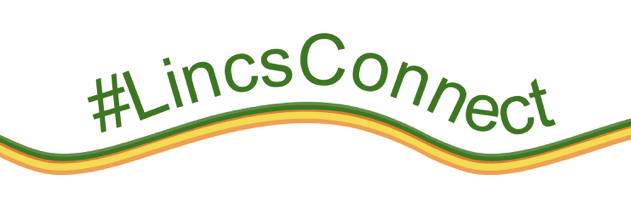
Understanding the difference…
While trying to update and secure my website I really do understand how frustrating and confusing this ‘tech stuff’ can be.
On social media (Twitter in particular) the difference between the ‘#’ and the ‘@’ signs are significant but can easily be confused. Let me break it down into very simple terms which I hope you will appreciate:
Think of the hashtag as being a file that everyone can search and view. When you type it, it’ll light up in blue instead of the usual black text. You can use it for your own marketing and advertising by creating your own words that will follow the hashtag sign. Here are a few examples: #LincsConnect #Scunthorpe #Lincolnshire – if you are using this hashtags you are targeting anyone who may be searching for tweets that are pertinent to Scunthorpe and/or Lincolnshire. You are also targeting people who are looking at the hashtag file for #LincsConnect.
Creating a hashtag
You can easily create your own hashtag of course. Simply type in the words after the hashtag sign. Let’s pretend that your company is called ‘Grow it’ and you sell seeds for the garden. You want to create a special offer of £10.00 discount for every £50.00 spend. You could use the hashtag #GrowIt10 and tell everyone to use that hashtag to claim their discount.
Own the hashtag
You’ve created your hashtag but you really ought to make sure that no one else is using the same hashtag. To do that, simply type the words GrowIt10 into your Twitter search bar to see what comes up. Hopefully you’ll see a note displayed saying “No results for growit10”. If that’s the case, you’re good to go; use that hashtag as your own and search it regularly to see who has used it to claim their discount. If you see a string of tweets displayed using the hashtag or words ‘growIt10’ I suggest you have a re-think to come up with something that isn’t already in use. If you do use it regardless of anyone else using it you’ll have a job finding the tweets that are relevant to you.
Have fun with the hashtag
Twitter isn’t just about selling and information though. It’s a place to have some light hearted fun. If that is what you are doing, you can make up some tweets that are purely nonsense but funny to read. #SillyTweet #fun #IDidntMeanToSayThat #HarryPotterWouldBeProudOfMyEfforts …. Anything goes really! If you’re having a joke with someone the hashtags can serve as a great punchline.
Hashtags and grammar

When creating or writing a hashtag you mustn’t use punctuation as the computers don’t understand it. Likewise, it doesn’t matter if you use all upper case, all lower case or a combination of the two.
What does the ‘@’ sign mean then?
Where the hashtag sends your tweet to a specific file or files (it could be #LincsConnect #Scunthorpe and #Lincolnshire as highlighted above), the ‘@’ sign is like a postage stamp because it sends the tweet to a specific account. If you post a tweet using @LincsConnect it’s because you want to speak to me personally. Only ‘I’ will see that tweet. If you want to let everyone in the County know about a sale, event or piece of information you need to be using #LincsConnect.
If you use multiple addresses ie. @LincsConnect @MandarinLeisure @MandarinLocal you’re involving those accounts in your conversation. It’s a handy way of talking to several people at the same time but can get confusing if they all answer at once!
Should I use @LincsConnect and #LincsConnect in the same tweet?
Generally speaking, ‘no’! If you want to contact me tweet me at @LincsConnect but if you want to get your message out to all followers use the hashtag #LincsConnect. There is really no advantage to using both the hashtag #LincsConnect and the address @LincsConnect in the same tweet. In fact, using the address @LincsConnect can result in other people having their messages missed as the ‘chatter’ on the account increases significanty.





I hope this helps some of you. Happy tweeting…







Really good explanation Martin. I’ve never really got it in all my years on Twitter, but I have now. I’ll start using more #’s and less @’s and see what happens on my analysis pages.
Being involved with the promotion of music and art, I’ve noticed that by duplicating content on other platforms, interest in our region has spread far and wide. This means that, for example, Lincolnshire music is getting recognition across the globe, and that facilitates reciprocal interaction.
Speaking to many locals, I know it is difficult to interact with people who we may view as competition.
However, if we embrace it, we are in fact creating more recognition of our local (Arts) scene.
I’m glad the blog was useful Dave. Hopefully others have read it too and, with a bit of luck, they’ll find it useful too.
‘They’ say that over use of hashtags on tweets are detrimental but I see one person who fills his tweets with lots of relevant hashtags and gets a great deal of engagement and recognition. I’ve also seen lots of ‘experts’ using no hashtags at all but getting no engagement whatsoever. In my opinion the person or company who actually engages with their readers are the ones who benefit the most.
I’ll be busy writing more blogs so keep an eye open for them and please feel free to share them with your friends and contacts.
M
Thanks that makes sense. Don’t suppose you can answer a question about Google maps and how to get my business to have a label on there please?
Hi Charlie, Thank you for your comment and I’m glad you like the blog. I can’t remember how to put the business tag on Google maps I’m afraid as it’s been many years since I did mine. However, whenever I need technical advice I type the question into my search bar and Google provides a list of answered including YouTube videos. I hope this helps
In order to have a listing on Google Maps you first need to create a Google My Business page. From here you can enter all of your business information, add posts, FAQs etc.